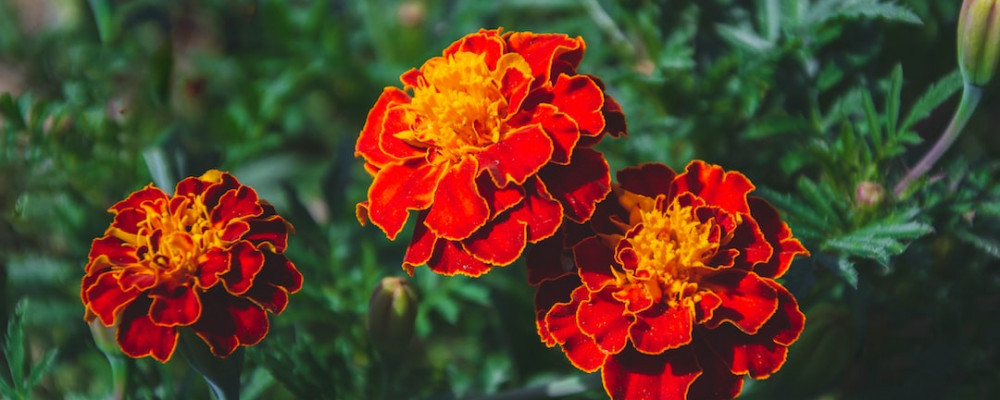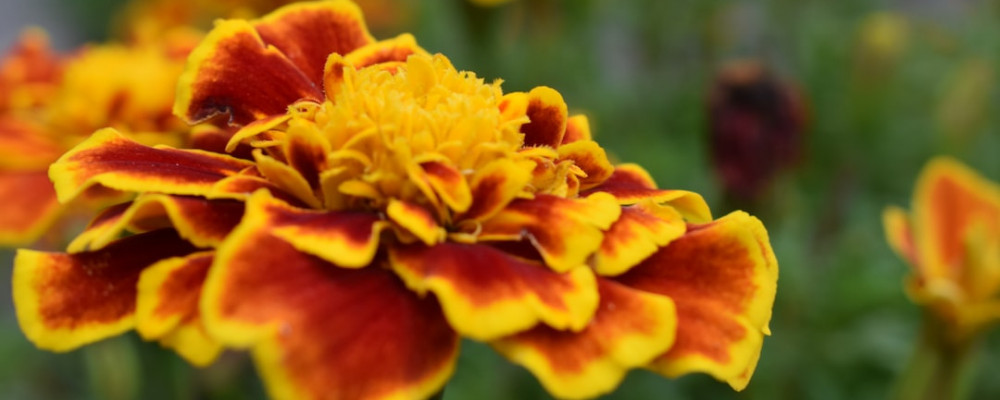
Welcome to our comprehensive guide on growing marigolds specifically for cut flowers! Marigolds are not only vibrant and beautiful, but they also make excellent additions to any floral arrangement. In this blog post, we will walk you through the essential steps of soil preparation, planting, harvesting, and pest control. We’ll also share insights into the optimum time to cut marigold flowers and provide tips on preparing the stems for a longer vase life. Additionally, we’ll showcase a couple of examples of the best marigolds for cut flower arrangements because Marvellous Marigolds make the Garden Beautiful.
Soil Preparation
Before planting marigolds, it’s crucial to prepare the soil properly to provide them with the best growing conditions. Marigolds thrive in well-drained soil with a pH range of 6.0 to 7.5. Start by removing any weeds or debris from the planting area. Loosen the soil to a depth of 8 to 12 inches and incorporate organic matter, such as compost or well-rotted manure, to improve fertility and drainage. Avoid heavy clay or compacted soils, as they can hinder root development.
Planting Marigolds
Marigolds can be started from seeds or transplants. If starting from seeds, sow them directly into the prepared soil after all frost danger has passed. Space the seeds about 1 inch apart and cover them with a thin layer of soil. Water gently to maintain moisture until germination occurs. For transplants, follow the spacing recommendations on the plant tags and dig holes slightly larger than the root balls. Place the transplants in the holes, backfill with soil, and firm the soil gently around the plants. Water thoroughly after planting.

Harvesting and Pest Control
Marigolds are typically ready for harvest when the buds are fully colored and just starting to open. Snip the flowers early in the morning when the temperature is cool. To encourage continuous blooming, harvest the flowers regularly by removing faded blooms. Keep an eye out for common pests like aphids, slugs, and spider mites. Regularly inspect the plants and take appropriate measures such as spraying organic insecticidal soap or using natural predators like ladybugs to control pests.
To ensure the longest vase life, it’s crucial to cut marigold flowers at the right stage. Choose blossoms that have just fully opened with vibrant colors. Avoid harvesting flowers that are over-mature or starting to fade. The optimum time to cut marigolds is early in the morning or late in the evening when the plants are well-hydrated and the temperatures are cooler. This helps the flowers retain their freshness and prevents wilting.
 Check out Nature Hills Nursery BOGO items
Check out Nature Hills Nursery BOGO items
Preparing Stems for Long Vase Life
To extend the vase life of your marigold cut flowers, it’s important to take proper care of the stems. After cutting the flowers, immediately place them in a bucket of clean, lukewarm water. Remove any leaves that would be submerged in the water to prevent bacterial growth. Using sharp scissors, make a fresh diagonal cut at the base of each stem under running water. This helps to prevent air bubbles from entering the stem, ensuring proper water uptake. Transfer the marigold stems to a vase filled with fresh water and add floral preservatives to nourish the flowers. Keep the vase away from direct sunlight and replace the water every two to three days to maintain freshness.

Best Varieties for Cut Flowers
Marigolds are not only beautiful additions to any garden but also serve multiple purposes, making them a popular choice among gardeners. Some varieties of marigolds are specifically cultivated for their stunning blooms, perfect for creating vibrant cut flower arrangements. On the other hand, certain marigold varieties are renowned for their natural pest-repellent properties, making them valuable assets in organic pest control.
For those looking to add a touch of beauty to their homes with marigold cut flowers, French marigolds (Tagetes patula) are a top choice. Known for their compact size and abundant blooms, French marigolds come in various eye-catching colors, including shades of yellow, orange, and red. Their intricate, daisy-like flowers make them ideal for bouquets, floral arrangements, or even as single-stemmed focal points. Their long-lasting blooms and delightful fragrance add charm to any indoor space.
Another variety well-suited for cut flowers is the African marigold (Tagetes erecta). These marigolds are known for their large, showy blooms, which can reach up to 4-5 inches in diameter. African marigolds come in vibrant hues of yellow, orange, and gold, making them perfect for creating bold and striking floral displays. Their sturdy stems and long vase life ensure that your cut flower arrangements will last for days, filling your home with radiant colors and sweet fragrance.
When it comes to natural pest control, Mexican marigolds (Tagetes lucida) are highly regarded. These marigolds not only repel pests with their distinctive aroma but also attract beneficial insects such as ladybugs and lacewings, which prey on garden pests. Mexican marigolds have delicate, fern-like foliage and produce small clusters of bright yellow flowers. Their pest-repellent properties make them an excellent choice for companion planting with vegetables and other susceptible plants, helping to deter harmful insects and maintain a healthy garden ecosystem.

Calendula marigolds (Calendula officinalis) are another variety often used for pest control in gardens. Although not true marigolds, they are commonly referred to as such due to their similar appearance. Calendula marigolds feature daisy-like flowers in shades of yellow and orange. They are known for their medicinal properties and are often used in herbal remedies. Calendula marigolds attract beneficial insects such as hoverflies and parasitic wasps, which prey on aphids, whiteflies, and other common garden pests.
Conclusion
When selecting marigolds for cut flowers, French marigolds and African marigolds are the go-to choices due to their stunning blooms and lasting vase life. On the other hand, Mexican marigolds and calendula marigolds are favored for their pest-repellent properties and ability to attract beneficial insects, making them valuable assets in organic pest control. By choosing the right marigold varieties for your specific needs, you can enjoy both the beauty of their blooms and the practical benefits they bring to your garden.
By following these guidelines for soil preparation, planting, harvesting, and pest control, you can successfully grow marigolds for stunning cut flower displays. Remember to cut the flowers at the optimal time and prepare the stems properly for a longer vase life. Experiment with different marigold varieties to create eye-catching floral arrangements that will brighten any space.




In this extensive guide you will discover how to grow the marvellous missouriums for cutting flowers. It stresses the optimal timing of harvest and the care of stems for a longer vase life, covering soil preparation, planting, harvesting and pest control. The guide provides useful information and inspiration to both gardeners and lovers of flowers by combining practical knowledge with real appreciation for the beauty of marigolds.